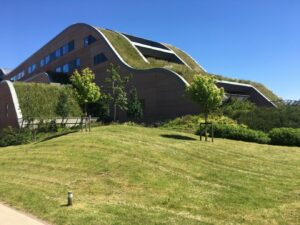The UK’s traditional drainage systems continue to be put under pressure by a combination of factors, ranging from ever-greater urbanisation and an expanding population to progressively intense weather patterns accelerated by the climate crisis.
On a backdrop of such circumstances, it cannot be a great surprise that the UK Government – alert to the prospect of surface water and sewage flooding becoming more frequent and severe in the years ahead – has announced that it will implement Schedule 3 of the Flood and Water Management Act 2010 in England.
It is hoped that this change will help to increase control over flooding and wastewater discharges. But what do you need to know about Schedule 3 of the Flood and Water Management Act, particularly from the point of view of any projects you may be overseeing that might necessitate ABG’s geosynthetics expertise?

A short history of Schedule 3 and its implications for the UK’s drainage systems
In January 2023, the UK Department for Environment, Food and Rural Affairs (Defra) announced it was set to alter its approach to sustainable drainage, a recent Government review having recommended making sustainable drainage systems (SuDS) mandatory for new developments in England.
The Government has accepted the recommendation arising from the review to implement Schedule 3 to the Flood and Water Management Act, reasoning that this change will “reduce the risk of surface water flooding, pollution and help alleviate the pressures on our traditional drainage and sewerage systems.”
The Schedule had been excluded from the Act’s ratification 13 years ago; in Wales, however, the schedule was initiated into law in 2019. Now, England looks set to follow suit, with implementation expected in 2024.
Schedule 3’s core purpose is to make it a mandatory requirement to incorporate SuDS into new developments. However, the schedule also outlines information on what a sustainable drainage system is, describing it as a structure – or part of a structure – that has been designed or exists in order to receive rainwater. Excluded from this definition are public sewers and water courses such as streams or rivers.
SuDS can take a variety of forms, including roof level blue roof and / or green roof designs, linear wetlands, swales, retention ponds and detention basins. There are multiple ways in which such systems can control water runoff, and they can present a range of benefits for both local communities and enhance biodiversity in the broader environment.
Those advantages encompass improvements in water quality, a reduction in flood-related damage, protection and enhancement of the environment, in addition to ensuring drainage systems’ stability and durability.
It is hoped that all of these benefits will be realised up and down the country as a consequence of the implementation of Schedule 3.

What’s next for the Schedule’s implementation – and your future project’s planning requirements?
There are a number of ways in which Schedule 3 of the Flood and Water Management Act will affect the planning process, for example, SuDS approval bodies – known as SABs – will be introduced, with a focus on ensuring new drainage systems satisfy a range of parameters, including being sustainable according to the regulations.
As mentioned above, the actual implementation of the schedule is not expected to happen before 2024. Nonetheless, the Government has pledged to consider exactly how Schedule 3 will be implemented, while also taking into account “the cumulative impact of new regulatory burdens on the development sector.”
In its January press release, Defra stated that a public consultation would take place later in 2023, with views set to be collected in relation to the impact assessment, national standards, and statutory instruments.
Contact ABG for specialist advice and support in relation to SuDS
Here at ABG, we will certainly keep a close eye on the latest developments connected to the Schedule 3 implementation and other aspects of SuDS in England and the broader UK.
In the meantime, whether you would like to receive help and guidance in relation to drainage for a green pitched roof, blue roof, permeable paving scheme or any other SuDS project that could benefit from our in-depth geosynthetics knowhow, please don’t hesitate to reach out to the ABG team.
